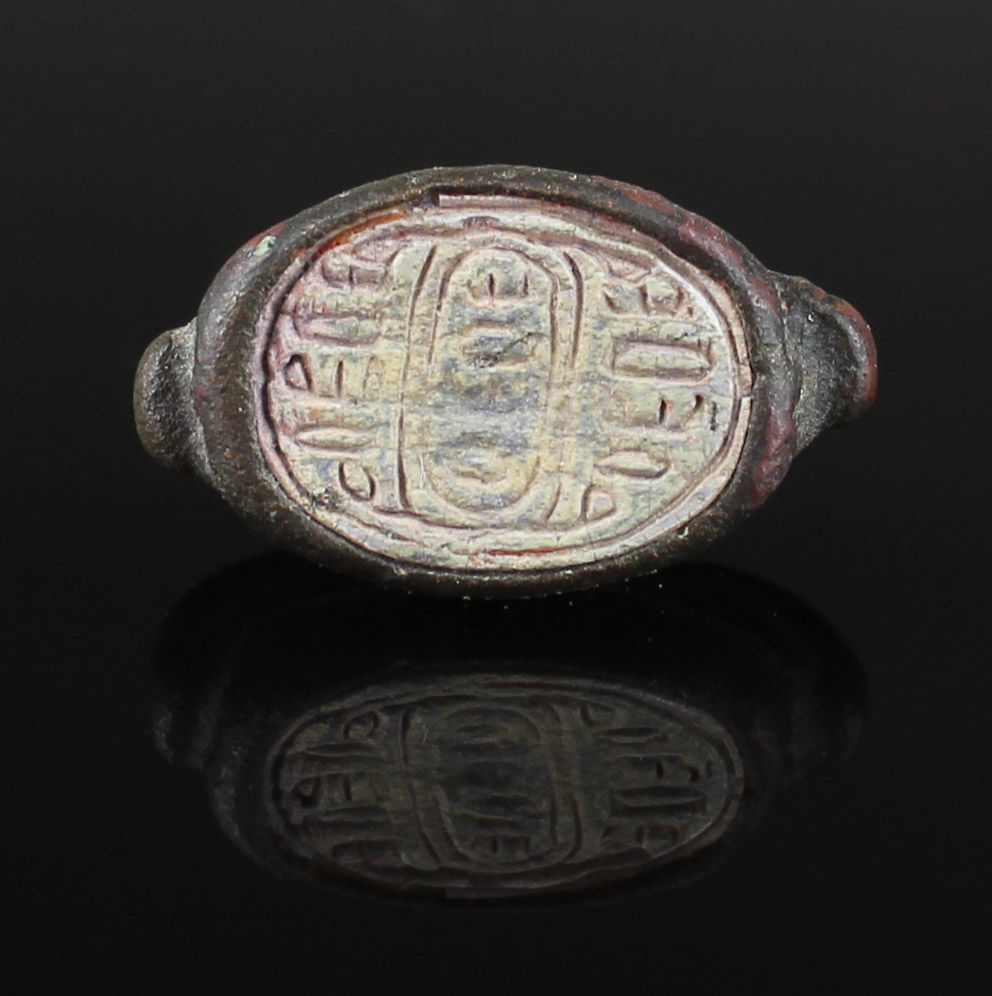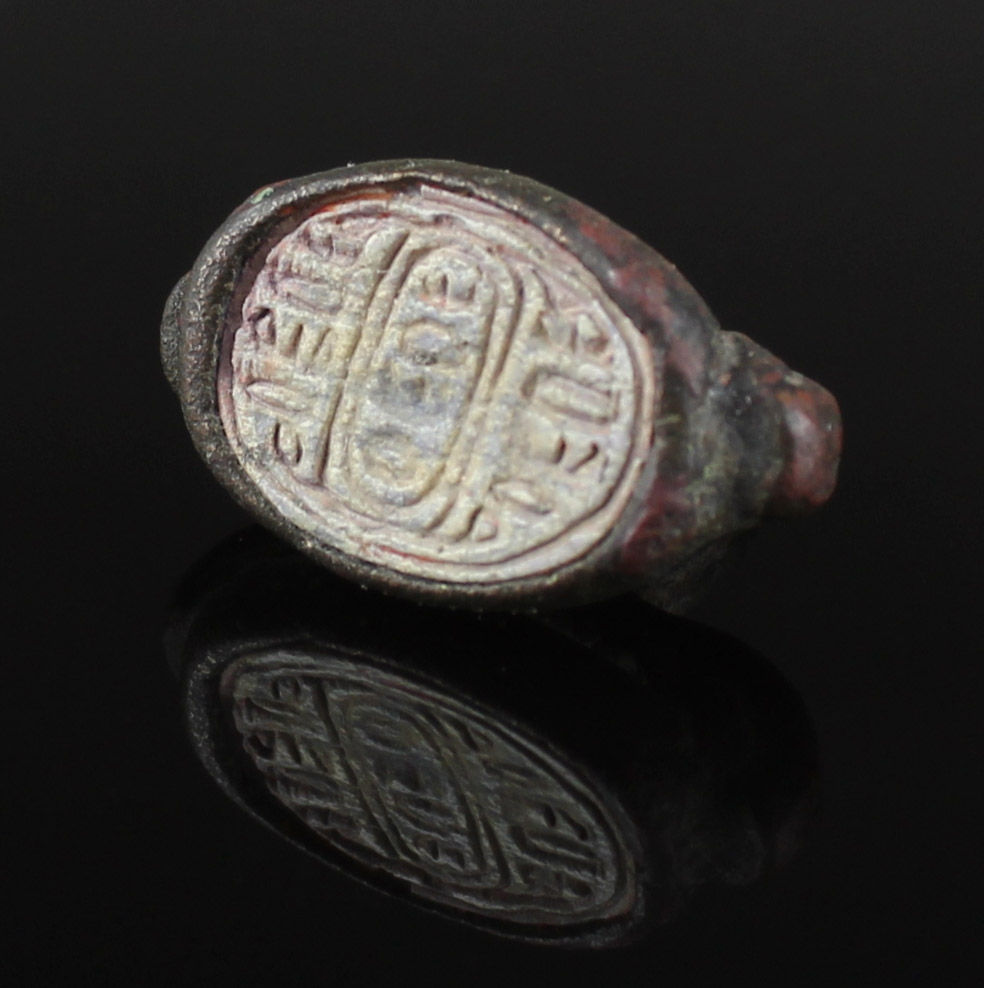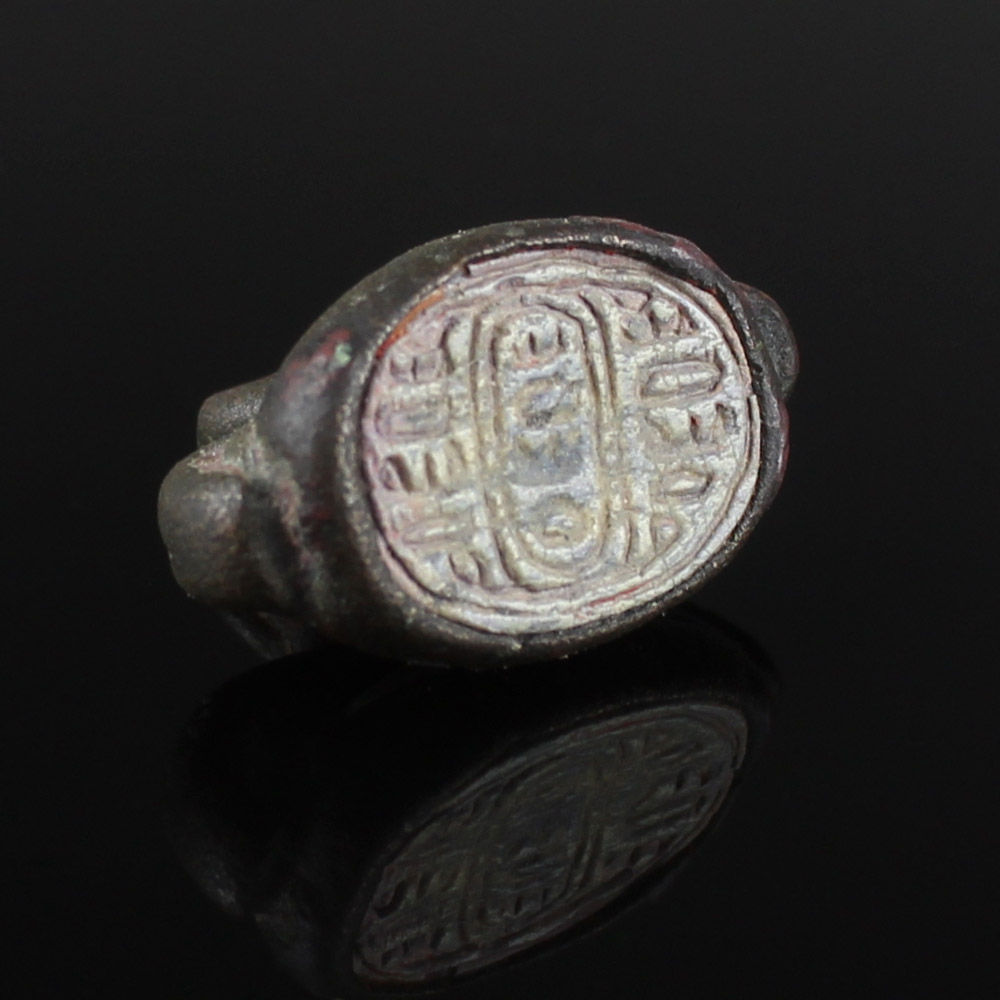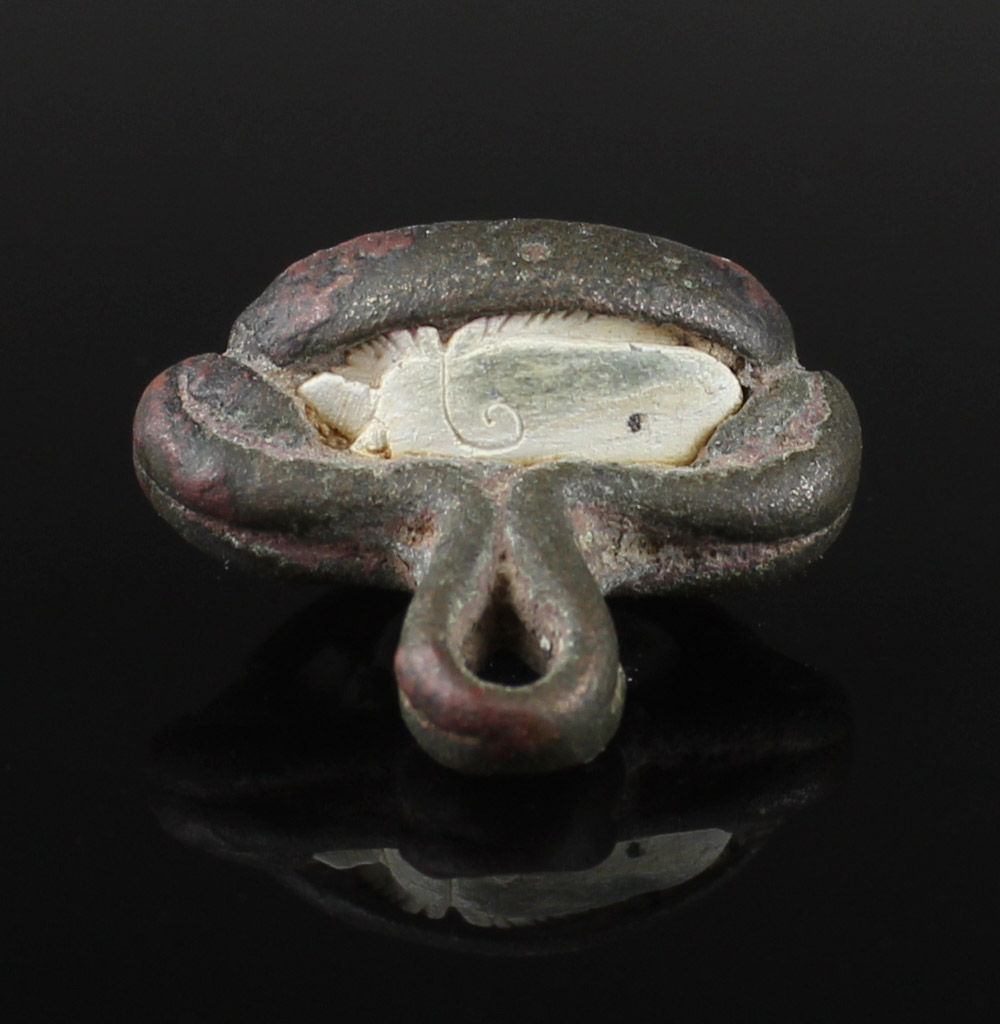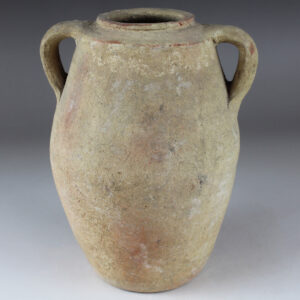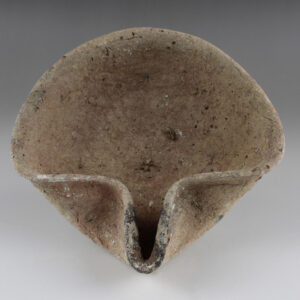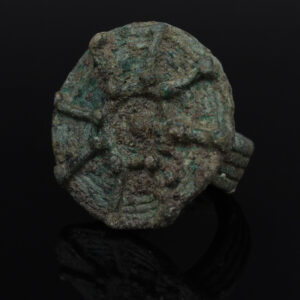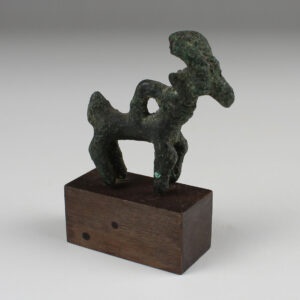Description
| ITEM | Scarab seal in bezel ring |
| MATERIAL | Steatite and bronze |
| CULTURE | Iron Age |
| PERIOD | 8th Century B.C |
| DIMENSIONS | 16 mm x 18 mm |
| CONDITION | Good condition |
| PROVENANCE | Ex Museum Exhibiton of the Arbeitsgruppe für Biblische Archäologie, Germany (Deaccession), Ex Shlomo Moussaieff collection |
These artifacts hold historical and cultural significance and are often rich in symbolism and artistic detail.
The scarab itself is a beetle-shaped amulet or seal that was highly popular in ancient Egypt and other regions of the ancient Near East. Scarabs were typically made from various materials, such as stone, clay, or precious metals like gold. They were often engraved or inscribed with intricate designs, hieroglyphs, or symbols.
In a bezel ring, the scarab seal would be mounted in a raised setting or bezel, which allowed it to be easily worn on a finger. The wearer could use the seal to make impressions in clay or wax, creating a unique and personal seal impression. These seals had a variety of functions, including as symbols of authority, amulets for protection, or as personal identification marks.
During the Iron Age, scarab seals in bezel rings would have been used by individuals in various cultures for both practical and symbolic purposes. They often featured iconography and inscriptions that reflected the beliefs and identity of the wearer. These artifacts are valuable for archaeologists and historians because they provide insights into the social, religious, and artistic aspects of the Iron Age civilizations in which they were used.


